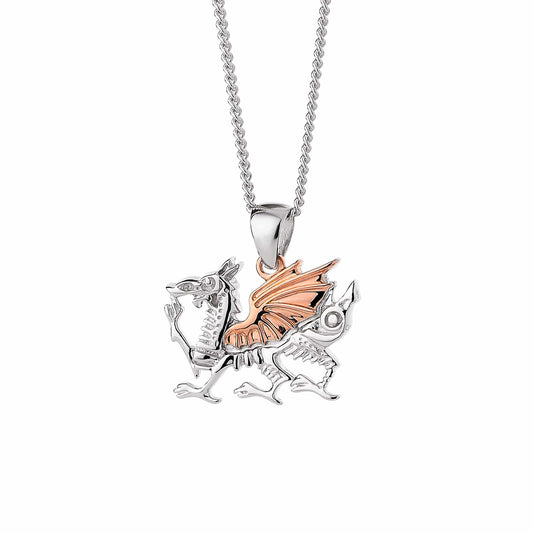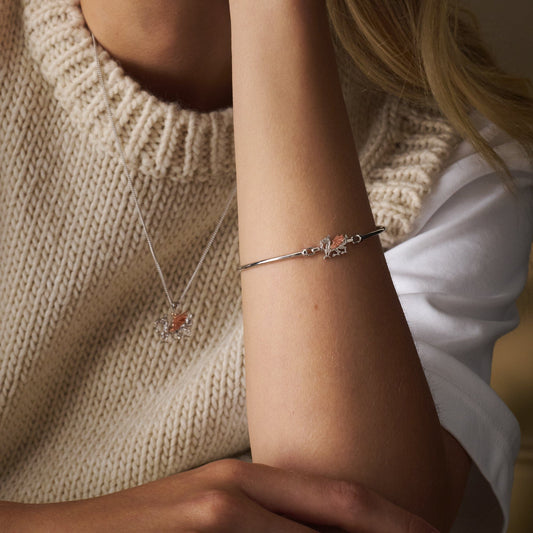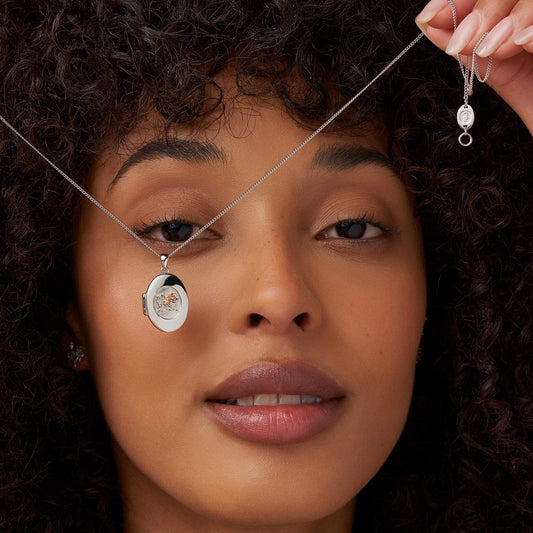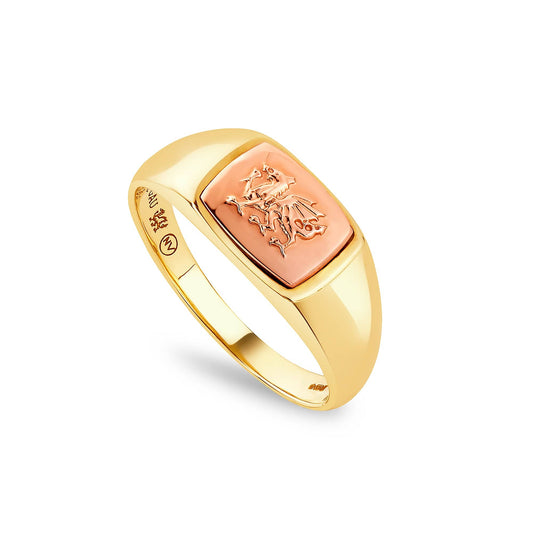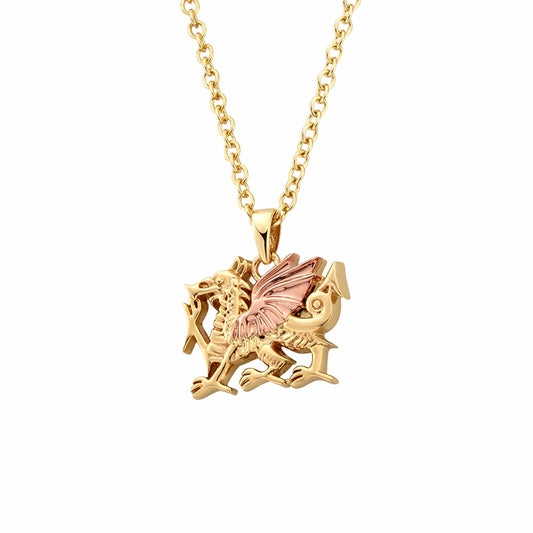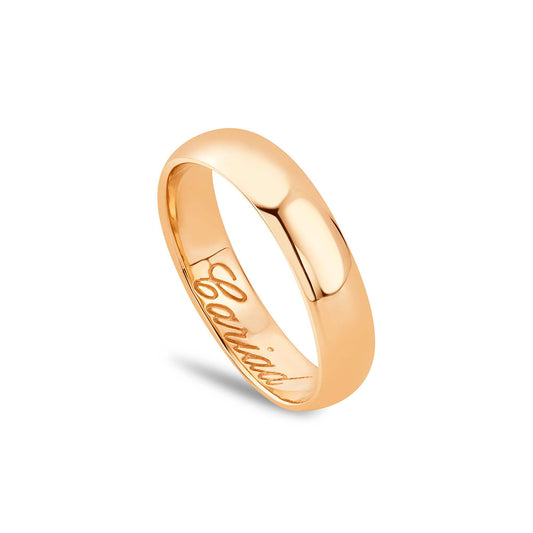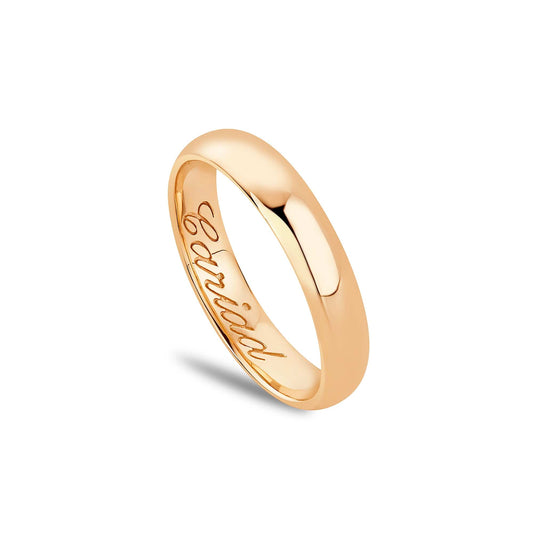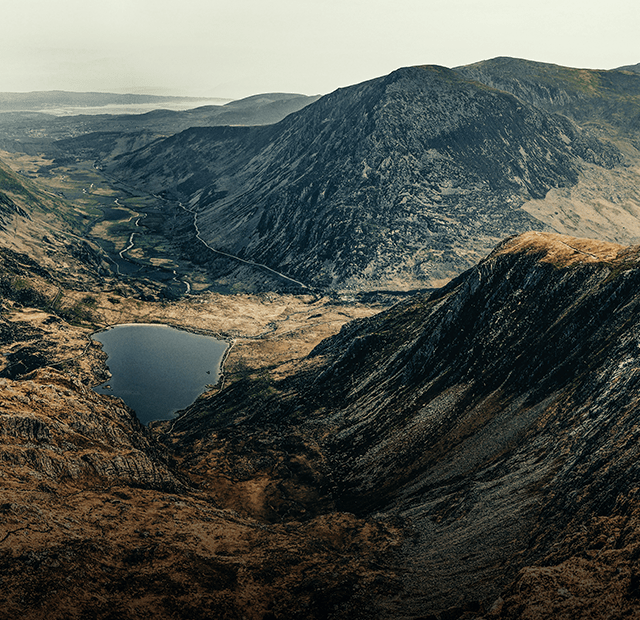
From the Depths of Snowdonia
The Legacy of Clogau GoldThe gold once mined at Clogau St. David’s Mine is a striking testament to the hidden beauty of the Welsh landscape. Nestled in the heart of Snowdonia’s stunning mountains, the Clogau St. David’s Gold Mine is a true hidden gem, one that has yielded rare Welsh gold, now captured in the elegance, uniqueness and timelessness of Clogau jewellery. Welsh gold is incredibly rare, as gold mining no longer takes place in Wales. It is because of this rarity that a small amount of real Welsh gold is delicately contained within each piece of Clogau jewellery, a practice which ensures the longevity of the remaining gold and the affordability of Clogau’s unique pieces. The following information will take a dive into the history of Welsh gold and Welsh gold mining, from its formation in the earth to the beautiful Clogau jewellery it is caringly encased in today.
A Legacy Beneath the Land: The Dolgellau Gold Belt
The story of Clogau Gold begins, unlike most stories, millions of years ago, deep in the past, when geological forces shaped what we now know as the Dolgellau Gold Belt. The rocks that form this rich gold-bearing region date back to the Middle to Upper Cambrian period, a crucial era in Earth’s history that spanned from approximately 538.8 to 485.4 million years ago.
The Dolgellau Gold Belt is composed of post-metamorphic quartz veins that run in a northeast to southwest direction. Among these, the Chidlaw Lode and the St David’s Lode are one of several mineral-bearing veins in the region. A ‘lode’ refers to a deposit of metalliferous ore, such as gold, embedded within a vein, typically formed between layers of surrounding rock.
It is from this phenomenon that Welsh gold emerged, a unique gold that remains one of the rarest in the world.
Welsh Folklore: The Tale of Dinas Emrys and the Two Dragons
Some of our most stunning collections are inspired by the rich folklore of North Wales. Clogau jewellery weaves these ancient tales into timeless designs, such as our Dwynwen Collection, named after the 5th Century Welsh Princess who became the Welsh patron saint of lovers. This collection can be explored here, beginning with our elegant Forever Yours Sterling Silver Dwynwen Pendant with Opal. Our Welsh Dragon Collection draws from the legend behind the red dragon on the Welsh flag, a powerful emblem of identity and resilience. Explore our unique Welsh Dragon Collection here, starting with our popular Welsh Dragon Signet Ring, with matching neckwear, earrings and bracelets available for your consideration.
Welsh Dragon Jewellery
This legend begins with King Vortigern, who tried to build a fortress at Dinas Emrys to escape Anglo-Saxon invaders. Despite repeated failures, involving the walls of the fortress crumbling, he was told to seek a boy not of mortal nature who would guide him. That boy was Merlin (yes, that Merlin!), who revealed that two dragons, one red and one white, slept beneath the hillfort in a pool. The dragons, symbolizing the native Britons and the Saxons respectively, were released and battled fiercely. The red dragon triumphed, inspiring Vortigern to adopt it as a symbol of victory.
Even today, the red dragon remains a proud emblem of Wales. And just like these stories, Welsh gold is rare and legendary, so rare that even dragons cannot hoard it.
The ‘Big Three’ Welsh Mines: Where Does Welsh Gold Come From?
Fast-forwarding a few thousand years, we delve into the history of Welsh gold mining. Welsh gold has been found in three key locations along the Dolgellau Gold Belt:
The Clogau St David’s Gold Mine: A Legacy Begins
The Clogau Gold Mine, also known as Clogau St David’s Mine, is located near Bontddu, near Barmouth in North-West Wales. The Snowdonia Clogau Gold Mine has been producing gold since 1854 (sounds familiar?) from a vein of quartz called the ‘St. David's Lode’. This was the original gold used in our Welsh gold jewellery.
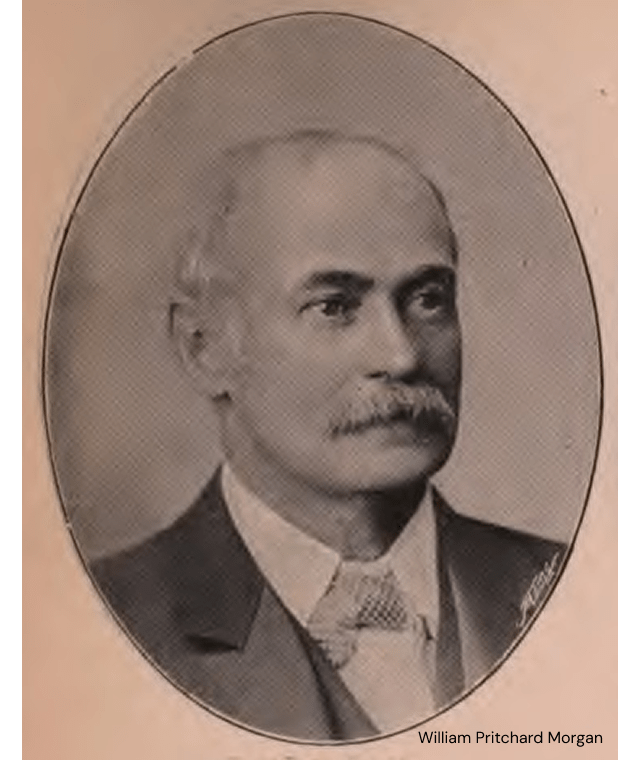
The Gwynfynydd Gold Mine: ‘The Welsh Gold King’
The Gwynfynydd Gold Mine is in Ganllwyd, Dolgellau in North Wales and sits along the Dolgellau Gold-Belt. In 1863, gold was first discovered from a vein named the Chidlaw Lode. However, it was not until 1887 that the mine was developed on a more commercial basis. In this year, William Pritchard Morgan, who would become known as the ‘Welsh Gold King’, discovered the Chidlaw Lode. Mr Morgan was so intent upon protecting the mine in its earlier days (and, can we blame him?), that he hired two police constables to protect the mine, and just one year later in 1888, two-hundred people were employed in the mine. Life as a miner could be dull, particularly when it came to food, and one miner from the Gwynfynydd Gold Mine wrote home the following:
‘Rabbits young, rabbits old,Rabbits hot, rabbits cold,Rabbits tender, rabbits tough,Thank the Lord we had enough’.
Not all that glitters is gold, indeed!
Gwynfynydd Mine became a lasting part of Clogau’s history in 2016, when Clogau Gold purchased the mine and extracted the remaining Welsh gold.
The Dolaucothi Gold Mines: Ancient Echoes
The Dolaucothi Gold Mines, also known as the Ogofau Gold Mine, are mines first delved into by the Ancient Romans, located in the valley of the River Cothi, in Carmarthenshire, North Wales. They are the only mines for gold that are located outside of those on the Dolgellau Gold Belt.
Whilst the mining of gold in Wales is heavily recorded in the late 1800’s, there are chronicles of the ancient Romans mining and using the gold in the Dolaucothi Gold Mines at least two-thousand years ago! Welsh gold was used to craft jewellery such as torcs – ceremonial bands worn around the neck by early Welsh princes and nobility. This site is now known for publicising the advanced methods Romans used for mining, such as the infamous Roman aquaeductus, and is now owned by the National Trust.
Striking Gold: The Welsh Gold Rush and the Clogau St David’s Mine
The Welsh Gold Rush
Now, we take a deeper dive into the more recent discovery of Welsh gold—recent, at least, when compared to events two millennia ago! Gold was first discovered in the Dolgellau area in the 1850s, sparking what would become known as the "Welsh Gold Rush”, and a rush it was! Beginning in 1860, this period marked the start of a vibrant decade in which many mines and mining companies rapidly emerged along the Dolgellau Gold Belt.
The Clogau St David’s Gold Mine was initially opened to exploit copper and lead veins; however, gold was struck in this Welsh gold mine in 1854 in a vein of quartz called the ‘St. David's Lode’. The Welsh miners did not just find gold … they unearthed legends. As one of the miners of the Clogau Gold Mine once said, ‘Finding gold in most mines around the world is like finding the cream in a sponge cake. Finding Welsh gold on the other hand is like finding the sixpence in the biggest Christmas cake you could imagine. There’s no pattern, no logic, and you never know when you’re just inches away’.
In 1860, preparations were made so that the Crown Estate, meaning lands and holdings in the United Kingdom belonging to British monarchs, would work the gold commercially. It quickly became Britain’s largest and richest mine. The mine continued until 1911, and from its opening to this time, it is estimated that over 2,400kg of gold was extracted. Gold fever: the only bug miners were happy to catch!
In 1919, the mine opened for a short time to further explore newly discovered gold veins, and significant amounts of gold was found. The mine then became abandoned after re-opening and closing for several small-scale operations, however, as you know, our story does not end here, it just begins!
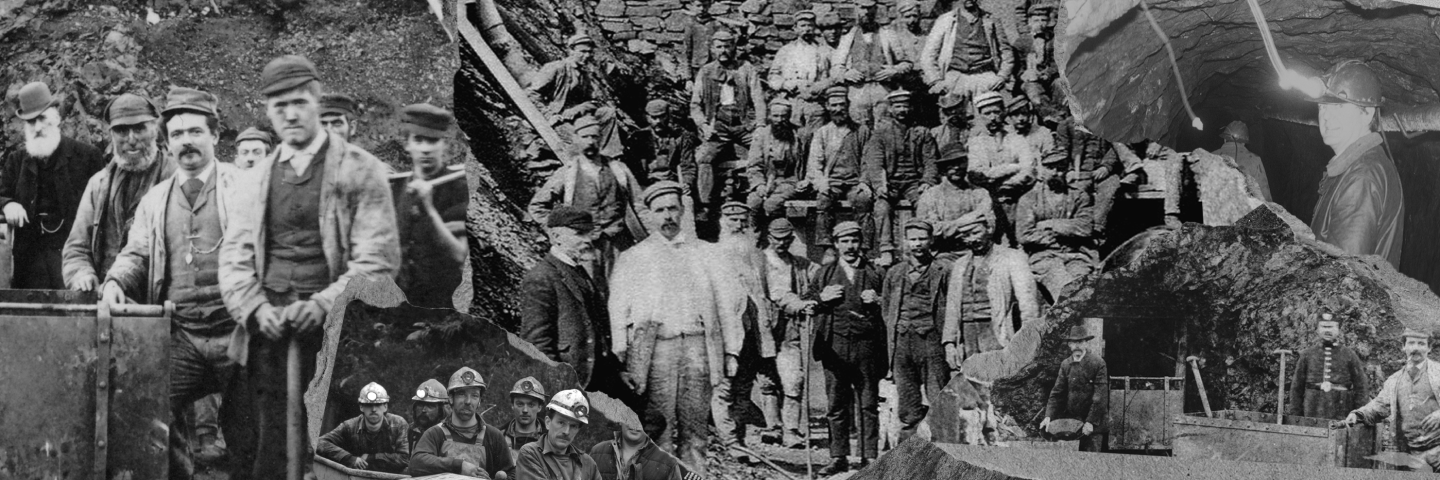
A Royal Lineage
It was in 1911 that Prince Edward was invested as the Prince of Wales. It is widely believed that the coronation regalia, known as the Honours of the Principality of Wales, included Welsh gold. This tradition has continued since 1923, and Welsh gold has since been used in royal wedding bands, symbolizing its deep connection to the British Royal Family and the enduring cultural significance carried. Unearth our Royal Clogau Collection, starting with the popular Royal Clogau® Sterling Silver Gateways Pendant with Swiss Blue Topaz, which is inspired by ornate palace gates.
Mr Roberts Strikes Gold
In 1989, a man named William Roberts, the founder of Clogau Gold, stumbled upon a golden opportunity, quite literally! He re-discovered the abandoned Clogau mine, tucked away in the heart of Snowdonia, and had grand plans to turn it into a sparkling tourist attraction. This, however, was not permitted by Snowdonia National Park Authority. Williams Roberts pivoted. Instead of tourists, he went after treasure. Betting that the old mine still held some hidden riches, he rolled up his sleeves, along with a team of three … and struck gold. Mining resumed in earnest between 1992 and 1998, and the Roberts children, along with their father and the mine’s caretaker, Jack Williams, spent many days prospecting at the mine.
From Mine to Memory
From here, Clogau Gold as a beloved jewellery company was born. Initially, just five lines of jewellery were created, which bloomed into a family run business built on the heritage and beauty of the Welsh language, landscapes, and mythology. Now, all of our jewellery contains stunningly rare Welsh gold, most from the original stockpile mined by William Roberts and his dedicated team of miners. This is what makes Clogau jewellery so rare. You can discover and enjoy browsing our stunning gold pieces here.
Since, the mine is now in its ‘exploration phase’, and Alba Mineral Resources Ltd are currently drilling to assess the commercial viability of reopening parts of the mine in the future.
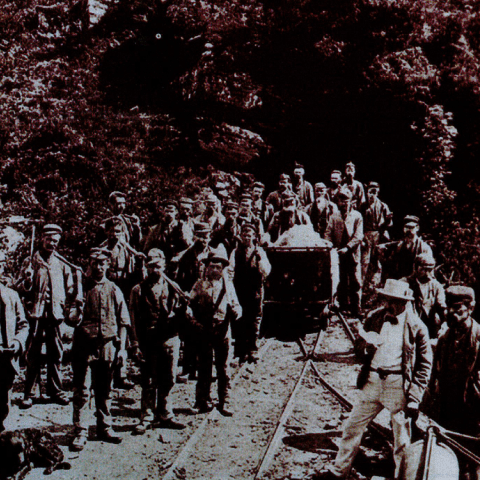
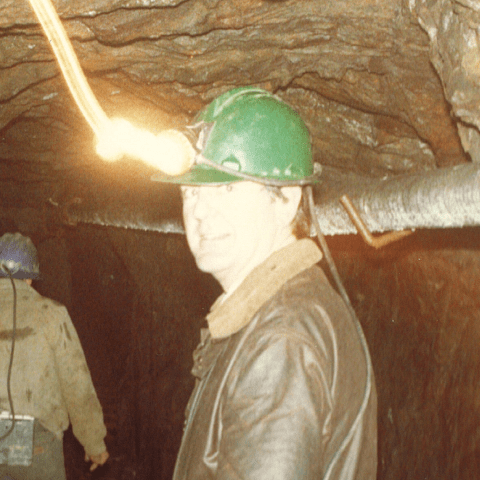
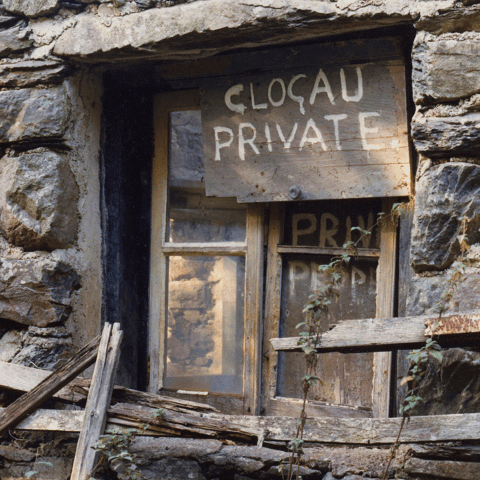
Clogau Gold of Wales: A Family Run Business
Clogau Gold is now a second-generation family-run business, with Benjamin Roberts, son of founder William Roberts, serving as Managing Director.
Benjamin Roberts regales stories of visiting the mine with his father, William, when he was a child, and was able to see the gold in its raw form. He distinctly remembers the gold having a yellow-rose hue, the colour from the copper that was initially mined in Clogau St David’s Gold Mine, which gave the gold this beautiful shade. This unique colour brought forth the concept of our striking 1854 collections, which can be explored in pieces such as our popular Insignia 18ct Solid Gold 1854 Blend Bangle. Further discover our stunning range of wedding and bridal bands here, available in yellow, rose, white, and 1854 gold, and striking platinum.
Shop 1854 Blend
Golden Standards: Is Welsh Gold Ethically Mined?
At Clogau, we are proud to use ethically sourced Welsh gold from the Clogau St David’s Mine and other Welsh gold, blended with responsibly with globally sourced gold.
As members of the Responsible Jewellery Council (RJC), we are committed to high standards in human rights, the environment, and responsible sourcing across all of our operations. We are certified to the RJC’s Code of Practices (CoP) and are actively working towards full traceability with their Chain of Custody Standard.
Ethics, transparency, and sustainability matter to us, every step of the way, from mine to jewellery box.
A Legacy That Lasts
It is with pride that Clogau has bloomed into a family-run business that continues to grow, with twelve stores, jewellery that sells worldwide, and a team at our Headquarters in North Wales who are committed to delivering the very best to our loyal customers, every step of the way.
From the forming of the Earth’s crust, legendary folklore, striking that first vein of rare Welsh gold, to William Roberts purchasing the Clogau St David’s Mine, a legacy was bound to be born, and it is one that has and will last for generations to come.
It is not just the beauty and unique quality of Clogau jewellery that makes it special, but the history, folklore, and unequivocal connection to Wales and its stunning landscapes, lasting folklore, and beautiful language. We sincerely hope you feel the spirit of Wales in Clogau jewellery and in the stories and history told throughout this article.
Until next time, keep in mined, not all that glitters is gold, unless you’re in Snowdonia!

With warm wishes from the land of dragons and gold,
Lydia Carter








